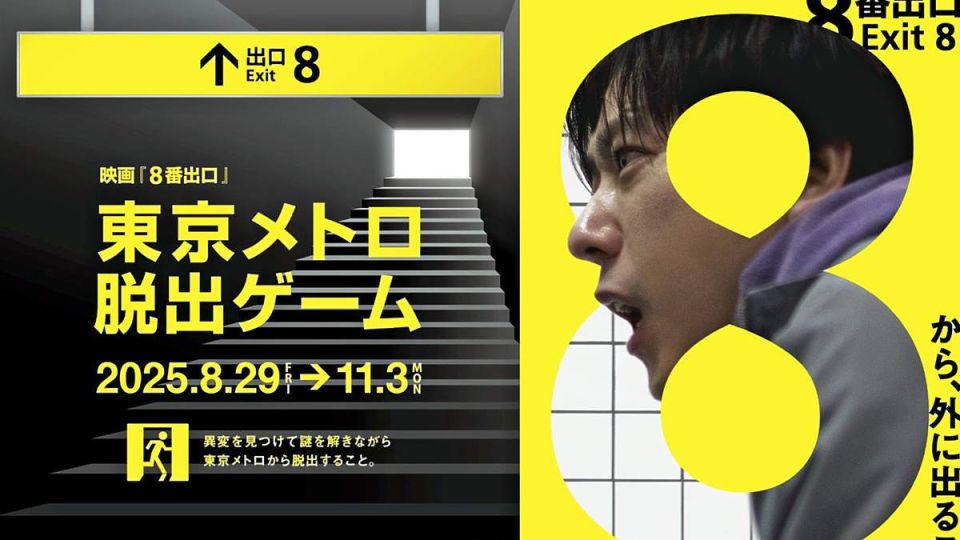September 12, 2025
TOKYO – Railway companies are endeavoring to attract passengers by taking advantage of their stations in unique ways to boost ridership numbers, which have yet to recover since the start of the COVID-19 pandemic.
One such endeavor involves using stations for interactive games tied to a movie, while another has made a virtual station for online visitors to interact each other.
The companies are holding such events in a bid to get people to visit stations, and become passengers, while also hoping that stations and the buildings they are in become destinations, boosting their real estate business.
Movie tie-in, virtual spaces
Tokyo Metro Co. is holding an event called the Tokyo Metro escape game in collaboration with a movie, “8-ban Deguchi” (Exit 8), through Nov. 3.
The film is a live-action adaptation of a video game in which the player searches for the real exit while paying attention to anomalies that appear in underground passageways. The event was planned to coincide with the release of the movie in theaters.
Participants in Tokyo Metro’s event visit designated stations in real life and are challenged to find mysterious things and abnormalities.
Osaka Metro Co. is also holding a similar event.
By collaborating with the high-profile movie, Tokyo Metro wants to increase metro ridership on weekends, the number tends to be low, and increase the number of people who visit commercial facilities around its stations.
“This is an opportunity to let people ride metro trains with a sense of pleasure while imagining scenes from the movie,” said Tokyo Metro President Akihiro Kosaka.
West Japan Railway Co. (JR West) operates Virtual Osaka Station, which is a digital twin of real-life Osaka Station in the metaverse virtual reality space.
Users can enjoy interacting in the virtual reality space at places like the clerk’s office.
Since the service began in 2022, over 45 million people have visited Osaka Station’s digital twin.
Scenes from the virtual station are live streamed in the real station and goods related to the virtual station are only sold inside the real-life station. With this endeavor, JR West has succeeded in attracting people to visit the real station.
Another endeavor to make a station itself become a tourist spot involves Yotsugi Station of Keisei Electric Railway Co. in Katsushika Ward, Tokyo. Visitors can view illustrations of the popular manga series “Captain Tsubasa” displayed on walls, stairways and many other places in the building of the station.
Yoichi Takahashi, the manga artist who created the series, grew up near the station, and collaborated on the project. Many foreign tourists have visited the station.
Sense of crisis
Railway companies are very eager to attract passengers to stations partly because they feel a sense of crisis about their declining number in the wake of the COVID-19 pandemic.
The total number of train passengers in fiscal 2023 was 22.6 billion, according to the Land, Infrastructure, Transport and Tourism Ministry. That number is still lower than the 25.2 billion in fiscal 2018 before the pandemic.
Train ridership has fallen with the adoption of teleworking and online conferences. Mid- and long-term growth is also hard to foresee due to the declining population.
This is why railway companies are enhancing their real estate businesses.
Since many railway companies own plots of land at stations and prime locations near them, they expect that by attracting customers via station building initiatives, stations can turn into destinations, leading to an increased use of railways and station buildings.
Data-driven new business development is also possible.
By analyzing user data of Virtual Osaka Station, JR West aims to gain revenue by using such data to propose advertising and events to other companies.
“Brand values of railways and stations are still high,” said Tomomi Nagai, chief analyst of Toray Corporate Business Research, Inc. “If consumer needs and opinions are carefully analyzed, this could uncover demand and create a new business opportunity over the medium to long-term.”

